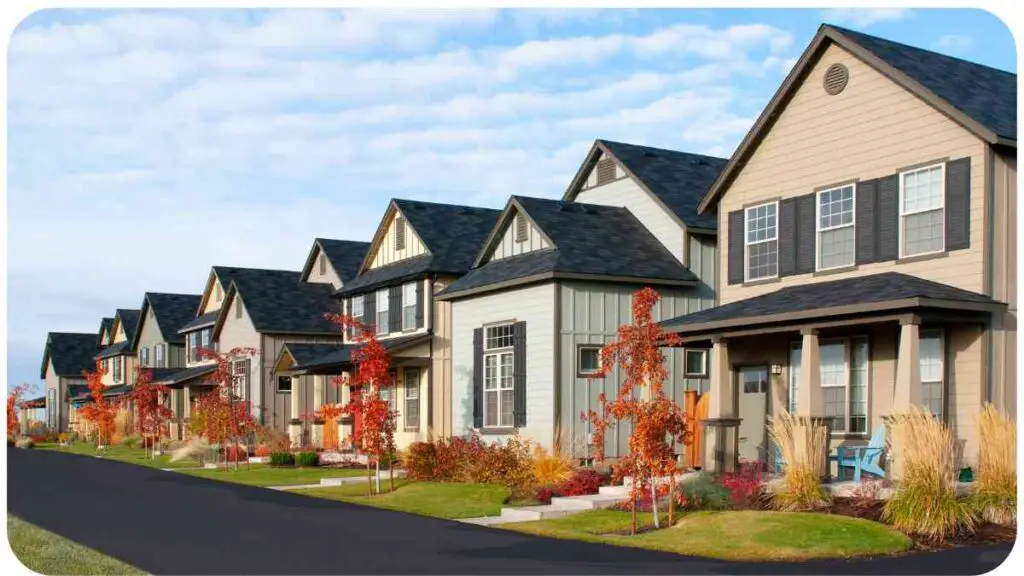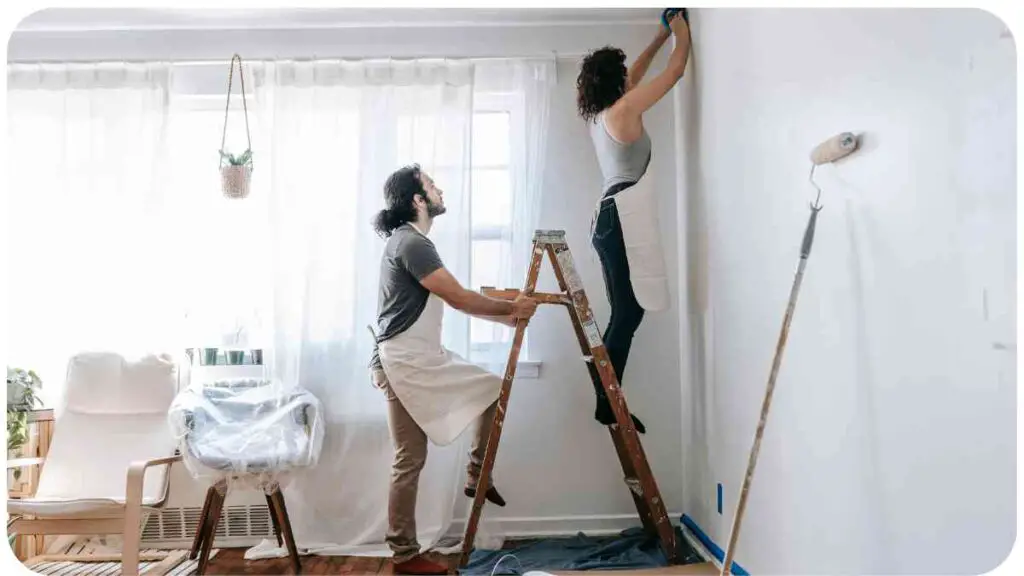Old houses possess a unique charm, but with age comes the potential for structural challenges. One of the most concerning issues is weight bearing failure, raising questions about the stability of these beloved structures.
In this article, we’ll delve into the signs, causes, preventive measures, and real-world examples of weight bearing failure in old houses. So, can an old house collapse due to weight bearing failure? Let’s explore.
| Takeaways |
|---|
| 1. Weight bearing failure poses a serious risk to old houses. |
| 2. Signs of weight bearing failure include sagging floors, cracks in walls, uneven floors, and misaligned doors/windows. |
| 3. Causes of weight bearing failure can range from foundation issues to poor construction materials and age-related wear. |
| 4. Regular structural inspections by professionals are essential for early detection and intervention. |
| 5. Preventive measures include reinforcement techniques, upgrading foundation support, and using quality materials. |
| 6. DIY fixes may be suitable for minor issues, but professional intervention is often necessary for major structural problems. |
| 7. When hiring contractors, thorough research and vetting are crucial to ensure reliable and competent professionals. |
| 8. Renovating old houses requires collaboration with architects and engineers to incorporate modern building techniques safely. |
| 9. Understanding insurance coverage and disclosing structural issues are vital considerations for homeowners of old houses. |
| 10. Dispelling common myths about old houses can help homeowners make informed decisions about maintenance and renovations. |
Understanding Weight Bearing in Houses:

Before we dive into potential failure, it’s crucial to understand how weight bearing functions in houses. A well-designed and constructed house evenly distributes the load to ensure stability. This equilibrium, however, can be disrupted over time, leading to structural issues.
Is your shower lacking cold water? Discover troubleshooting tips and solutions for no cold water issues to ensure a refreshing shower experience.
Table 1: Components of Weight Bearing
| Component | Role |
|---|---|
| Foundation | Supports the entire structure |
| Load-Bearing Walls | Distribute weight from floors and roof |
| Beams and Columns | Provide additional support and distribute weight |
| Flooring Systems | Transmit loads to the foundation |
Signs of Weight Bearing Failure:
Recognizing the signs of weight bearing failure is crucial for early intervention. Let’s explore common indicators that might signal potential issues.
1. Sagging Floors:
Sagging floors are often a clear indication of weight distribution problems. This can result from weakened beams or foundation issues.
2. Cracks in Walls:
Cracks in walls can suggest shifts in the structure. Understanding the types of cracks and their locations is vital for assessment.
Prevent water damage in your shower by learning how to fix your shower’s drywall. Quick and effective solutions to safeguard your bathroom walls and keep your shower in top condition.
3. Uneven or Sloping Floors:
Uneven or sloping floors indicate an imbalance in weight distribution. This could be caused by foundation settling or structural deterioration.
4. Doors and Windows Misaligned:
Misaligned doors and windows might indicate a shift in the frame, potentially due to weight bearing problems.
Table 2: Signs of Weight Bearing Failure
| Sign | Potential Cause |
|---|---|
| Sagging Floors | Weakened Beams, Foundation Issues |
| Cracks in Walls | Structural Shifts, Foundation Problems |
| Uneven or Sloping Floors | Foundation Settling, Structural Deterioration |
| Doors and Windows Misaligned | Frame Shifts, Weight Distribution Problems |
Causes of Weight Bearing Failure:
Understanding the root causes of weight bearing failure is essential for effective solutions. Let’s explore the primary culprits behind these structural challenges.
Achieve a perfect fit with your bathtub framing using these easy bathtub framing tips. Learn the essentials of proper framing to ensure stability and longevity in your bathroom.
1. Foundation Issues:
A compromised foundation is a common cause of weight bearing problems. Issues like settling, shifting, or deterioration can impact the entire structure.
2. Poor Construction Materials:
Houses built with subpar materials are more prone to weight bearing failure. Identifying and replacing these materials is crucial for long-term stability.
3. Age and Wear:
As houses age, wear and tear can lead to structural degradation. Regular maintenance is key to preserving the integrity of the building.
Table 3: Causes of Weight Bearing Failure
| Cause | Impact |
|---|---|
| Foundation Issues | Overall Structural Instability |
| Poor Construction Materials | Increased Vulnerability to Weight Bearing Failure |
| Age and Wear | Gradual Structural Degradation |
Importance of Regular Structural Inspections:
To ensure the longevity of an old house, regular structural inspections are paramount. Whether performed by professionals or through DIY methods, these inspections can detect issues early on.
1. Hiring a Professional Inspector:
Professional inspectors bring expertise to the table, conducting thorough examinations of a house’s structural components. Their trained eyes can catch subtle signs of weight bearing failure.
2. DIY Inspection Tips:
For proactive homeowners, DIY inspections play a crucial role. Regularly checking for signs of sagging, cracks, or unevenness can help catch problems before they escalate.
Table 4: Structural Inspection Methods
| Method | Description |
|---|---|
| Professional Inspection | Comprehensive examination by trained inspectors |
| Visual DIY Inspection | Regular checks for visible signs of structural issues |
Case Studies: Houses with Weight Bearing Issues

Real-world examples provide valuable insights into the challenges homeowners may face. Let’s explore two cases where weight bearing failure posed significant threats.
Combat annoying leaks with a comprehensive guide on fixing a leaky drain. Explore practical steps to address drainage issues and keep your sinks and pipes in optimal condition.
1. Mr. Johnson’s Century-Old Home:
Mr. Johnson’s historic home faced sagging floors and noticeable cracks in its aging walls. A professional inspection revealed foundation issues, requiring extensive repairs to prevent a potential collapse.
2. The Smiths’ Foundation Nightmare:
The Smiths purchased a charming but neglected old house. Unaware of its structural history, they soon discovered uneven floors and misaligned doors. Foundation problems, stemming from previous renovations, required costly interventions to secure the house.
Table 5: Case Studies – Lessons Learned
| Case | Lessons Learned |
|---|---|
| Mr. Johnson’s Century-Old Home | Foundation Issues Require Immediate Attention |
| The Smiths’ Foundation Nightmare | Thorough Structural History Investigation is Key |
Preventive Measures for Weight Bearing Failure:
Preventing weight bearing failure involves a combination of reinforcement techniques, quality materials, and regular maintenance.
1. Reinforcement Techniques:
Strengthening vulnerable areas through additional support, such as steel beams or additional piers, can enhance a house’s structural integrity.
2. Upgrading Foundation Support:
Addressing foundation issues promptly and utilizing modern support methods can prevent weight bearing failure.
3. Using Quality Construction Materials:
Choosing high-quality materials during renovations or repairs ensures the longevity of a house’s structure.
Table 6: Preventive Measures
| Measure | Purpose |
|---|---|
| Reinforcement Techniques | Strengthen Vulnerable Areas |
| Upgrading Foundation Support | Address and Prevent Foundation Issues |
| Using Quality Construction Materials | Ensure Longevity and Stability |
DIY Fixes for Minor Issues:
Not all structural issues require professional intervention. Homeowners can address minor problems with simple DIY fixes.
1. Fixing Cracks in Walls:
For hairline cracks, applying sealant or patching compound can prevent further damage.
2. Addressing Sloping Floors:
Shimming or adding support beams beneath sloping floors can restore balance and prevent worsening conditions.
Table 7: DIY Fixes
| Fix | Application |
|---|---|
| Fixing Cracks in Walls | Sealant or Patching Compound |
| Addressing Sloping Floors | Shimming or Adding Support Beams |
Hiring Contractors: Dos and Don’ts
When professional help is needed, hiring the right contractor is crucial for effective solutions. Let’s explore dos and don’ts when selecting a contractor for structural issues.
Understand why a level toilet is crucial for your bathroom with insights into the importance of a level toilet. Discover the benefits of proper installation and maintenance for a functional and efficient bathroom.
1. Researching and Vetted Professionals:
Conduct thorough research, check reviews, and seek recommendations to ensure you hire a reputable contractor with experience in structural repairs.
2. Signs of a Reliable Contractor:
Look for qualifications, certifications, and a transparent communication style. A reliable contractor should provide a detailed assessment and plan for repairs.
Table 8: Hiring Contractors Guidelines
| Guideline | Importance |
|---|---|
| Researching and Vetted Professionals | Ensure Reliability and Experience |
| Signs of a Reliable Contractor | Qualifications, Certifications, Transparent Communication |
Renovating Old Houses Safely:

Renovating an old house can be a rewarding endeavor, but it requires careful planning to ensure the safety of the structure.
1. Working with Architects and Engineers:
Collaborating with professionals like architects and structural engineers during renovations ensures that changes adhere to safety standards.
2. Incorporating Modern Building Techniques:
Integrating modern building techniques during renovations can enhance the overall stability and safety of an old house.
Table 9: Renovation Safety Measures
| Measure | Purpose |
|---|---|
| Working with Architects and Engineers | Ensure Compliance with Safety Standards |
| Incorporating Modern Building Techniques | Enhance Overall Stability and Safety |
Insurance Considerations for Old Houses:
When dealing with structural issues in old houses, understanding your insurance coverage is crucial.
1. Understanding Coverage:
Review your insurance policy to ensure it covers structural issues. Some policies may require additional coverage for such concerns.
2. Disclosing Structural Issues:
When obtaining insurance or selling an old house, full disclosure of any known structural issues is essential for ethical and legal reasons.
Table 10: Insurance Considerations
| Consideration | Importance |
|---|---|
| Understanding Coverage | Ensure Adequate Protection for Structural Issues |
| Disclosing Structural Issues | Ethical and Legal Obligations |
Common Myths about Old Houses:
Dispelling common myths about old houses is crucial for informed decision-making.
1. “Old Houses Can’t Be Saved”:
With proper care, maintenance, and strategic renovations, many old houses can be preserved for generations.
2. “Renovations Always Solve the Problem”:
While renovations can address issues, thorough assessments and professional interventions are sometimes necessary for lasting solutions.
Table 11: Myth Busting
| Myth | Reality |
|---|---|
| “Old Houses Can’t Be Saved” | Preservation is Possible with Proper Care |
| “Renovations Always Solve the Problem” | Professional Interventions may be Necessary |
Conclusion:
In conclusion, the risk of an old house collapsing due to weight bearing failure is a serious concern. However, with proactive measures, regular inspections, and informed decision-making, homeowners can safeguard their cherished homes.
By understanding the signs, causes, and preventive measures, individuals can ensure the longevity and stability of their beloved historic residences.
Further Reading
- Dalinghaus Construction Blog: Explore insights into the connection between foundation issues and the risk of a house collapse. Dalinghaus Construction provides expert perspectives on identifying and addressing these challenges.
- MDPI: Sustainability Journal: Delve into a research article from the Sustainability Journal, examining sustainability aspects related to building collapses. Gain a deeper understanding of the broader implications and solutions for structural issues.
- Rhoades Legal: Dangers of Building Collapses: Rhoades Legal explores the dangers associated with building collapses, focusing on shifting surfaces and their impact on worker safety. Discover legal perspectives on mitigating risks in construction.
FAQs
Can weight bearing failure lead to a house collapse?
Yes, weight bearing failure can compromise the structural integrity of a house, potentially leading to a collapse if not addressed promptly.
What are the signs of weight bearing failure in a house?
Signs include sagging floors, cracks in walls, uneven or sloping floors, and misaligned doors and windows. Each indicates potential issues with weight distribution.
How can homeowners prevent weight bearing failure?
Preventive measures include reinforcement techniques, upgrading foundation support, and using quality construction materials. Regular inspections and timely repairs also play a crucial role.
Are there DIY fixes for minor weight bearing issues?
Yes, homeowners can address minor issues like cracks in walls or sloping floors with DIY fixes. Applying sealant for cracks or adding support beams can help mitigate problems.
How important is it to disclose structural issues when selling an old house?
Disclosing structural issues is crucial for ethical and legal reasons when selling an old house. It ensures transparency and helps potential buyers make informed decisions.

Hellen James is the author of the blog and a licensed plumber with over 15 years of experience. She shares her knowledge and experience in plumbing and drainage through insightful and informative articles

